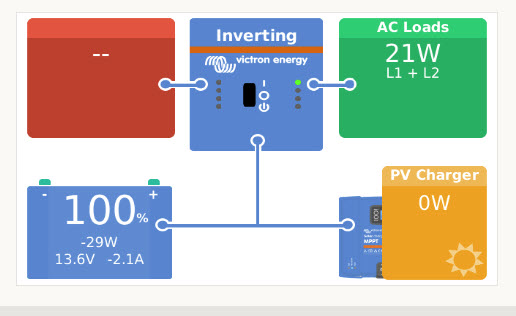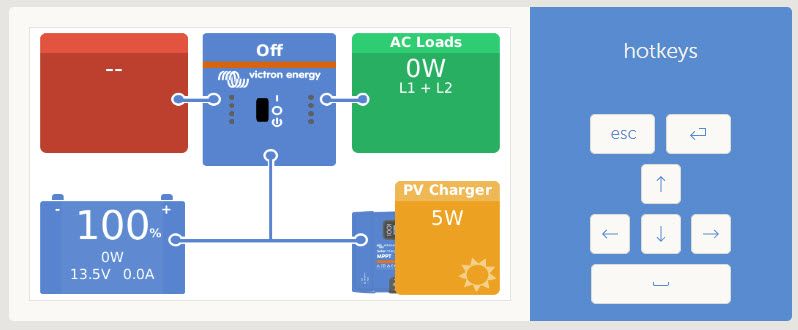So my newly set up Victron system is showing my battery is full, a small AC load, and no output from my solar panels even though it is quite sunny out - and they were working (charged the battery to 100%) just fine earlier today.
What I would have expected is that my solar panels would be providing the power to take care of the demands of the inverter and the small AC load, and that the battery would just be resting at 100%.
However, what appears to be happening from the live reporting is that the battery is providing the power to the AC load, and that nothing is being drawn out of my solar panels.
Here's a screen shot:

Am I interpreting this right, is there something I am missing?

